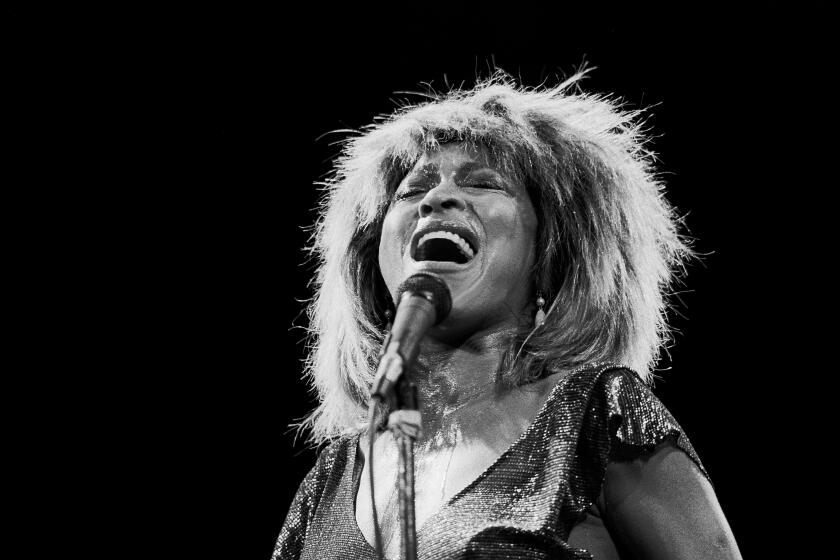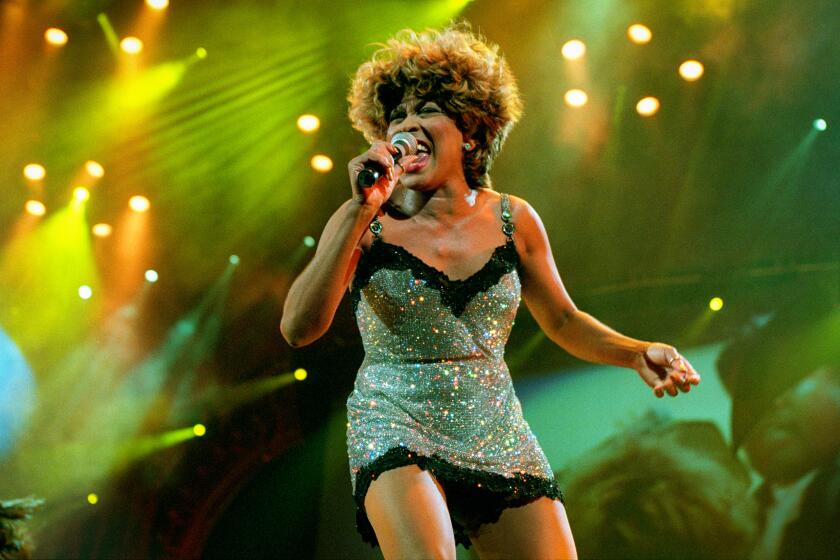Tina Turner, a rock star for the ages, shouldn’t be defined just by what she endured
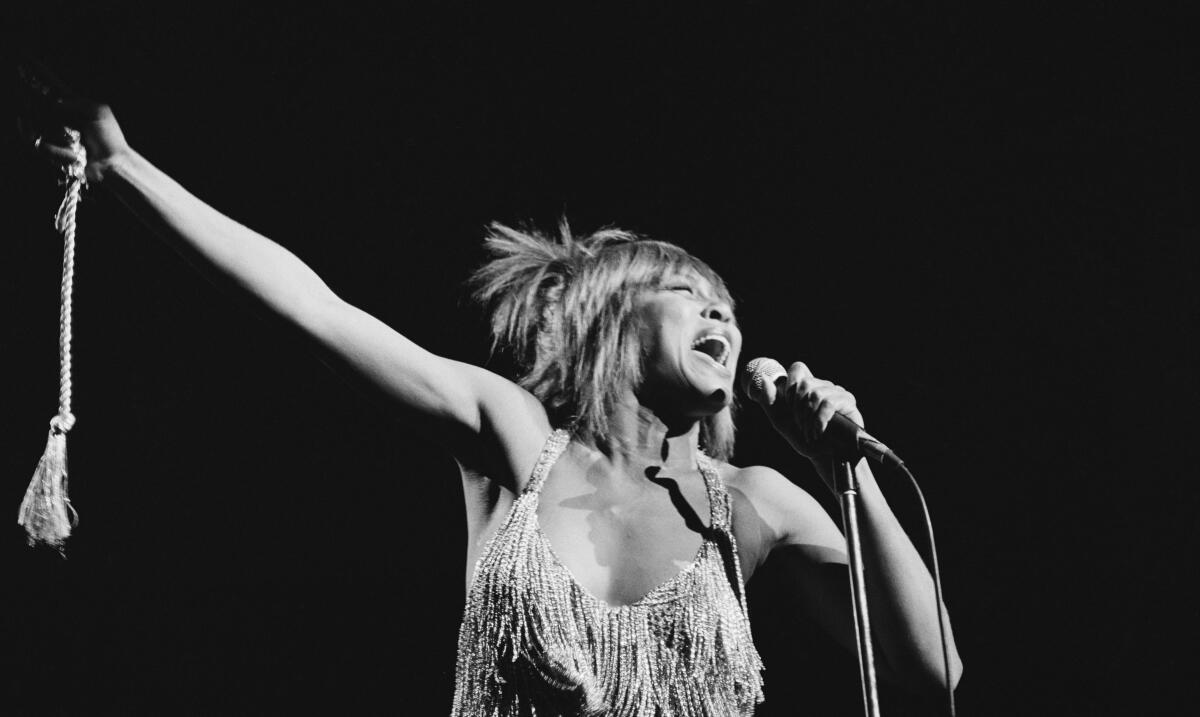
Think of it as rock ’n’ roll’s original spoiler alert.
Sermonizing in her low, throaty croon as her husband Ike Turner strums an electric guitar, Tina Turner famously introduces the couple’s indelible 1971 recording of “Proud Mary” by informing the listener, “Every now and then, I think you might like to hear something from us, nice and easy. There’s just one thing,” she adds. “You see, we never, ever” — in her telling, the words are more like “nevah, evah” — “do nothing nice and easy. We always do it nice and rough.” Pause for effect. “But we’re gonna take the beginning of this song and do it easy.” Another beat.
“But then we’re gonna do the finish … rough.”
Grammy-winning Tina Turner was a rock ’n’ roll original with her high-octane, powerful yet soulful voice and iconic hairstyles.
Did this little spiel, a version of which Turner would go on to deliver for decades every time she did “Proud Mary” in concert, ever prevent anyone from being bowled over when she got to the rough part? Unlikely. That’s how volcanic Turner’s performance of “Proud Mary” was, particularly onstage, where she’d turn the Creedence Clearwater Revival tune into a shaking, shimmying soul-rock rave-up that made you half-expect the fringe to come flying off her sparkly mini-dress.
Watch any of the dozens of live “Proud Mary’s” on YouTube, and what you’ll be struck by — beyond her mastery of tone and timing — is how gloriously sweaty the singer is by the end, as though the effort she’d put into the song had come as a surprise even to her (or at least to her body). Yet there she’d be the next time she sang it, trying to warn everybody about what was coming before flipping wigs all over again.

Turner, who died Wednesday at age 83, lived a life that defied expectation. She made it through a hardscrabble childhood in rural Tennessee to become a dynamo of ’60s R&B in a duo with Ike, whose horrific abuse she survived to reinvent herself as one of the biggest solo acts of the ’80s; she toured the world until she was almost 70, then retired in 2009 without going back on it like virtually every other pop star in history.
Her story is one of resilience, no doubt — “Basically, the message is determination,” she told The Times in 1996 — yet she wasn’t defined by what she’d endured; instead, she found new ways to thrive.
As she put it night after night in that borrowed song about rolling on the river: “I never lost one minute of sleeping worrying about the way that things might have been.”
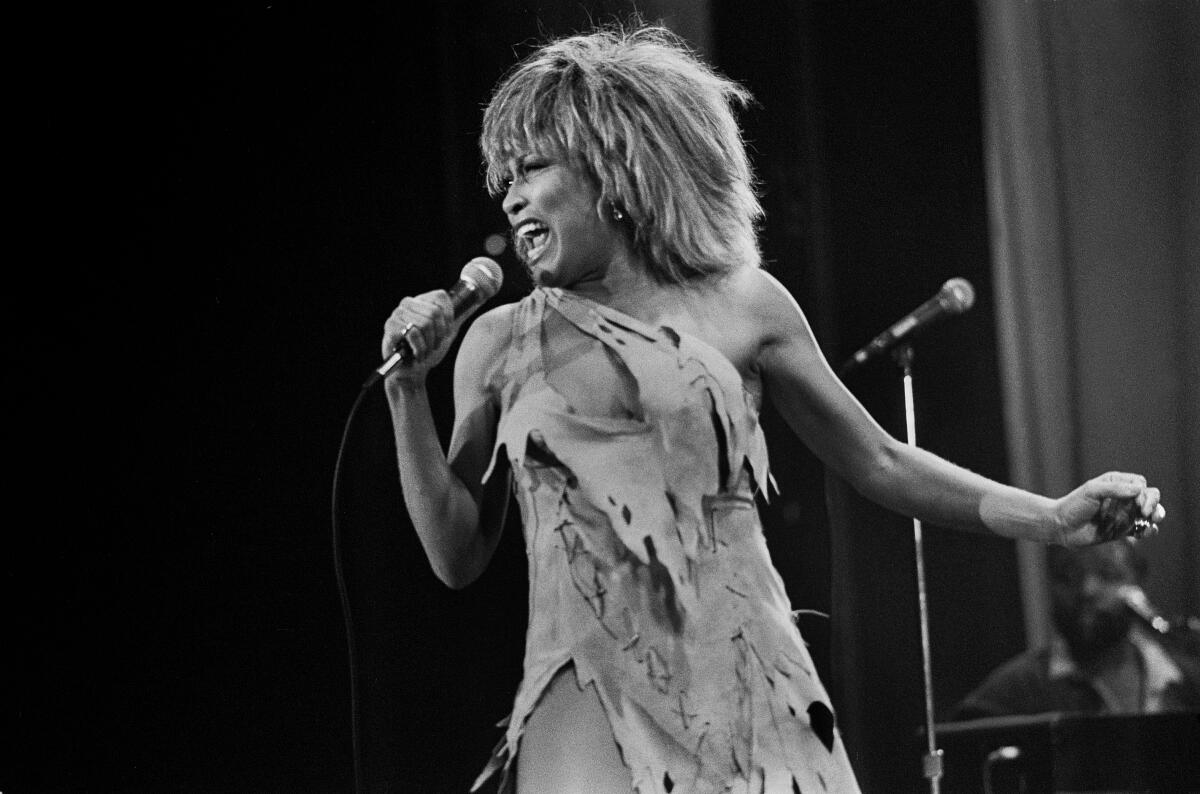
Born Anna Mae Bullock and raised in tiny Nutbush, Tenn., Turner made her name — the one Ike gave her without asking — as the electrifying star attraction of her and her husband’s revue. Her first single as lead vocalist, 1960’s “A Fool in Love,” is staggeringly raw: She growls, howls and grunts over a rollicking groove that bounces and thumps like a hand-me-down coach rattling toward the next gig. The voice is powerful but haunted by the knowledge that behind Turner looms her tormentor. Listen to the couple’s “It’s Gonna Work Out Fine,” a No. 2 R&B and top 20 pop hit in 1961, in which she refers to Ike as “thriller,” only to have him correct her: “The killer, honey.”
The vision was Ike’s but the emotional energy derived from Tina — one reason producer Phil Spector (who abused his wife Ronnie Spector much the way Ike did Tina) sought to cut Ike out of the recording of “River Deep — Mountain High,” the quasi-operatic 1966 single that showed a more melodic side of her singing and helped endear Turner to a generation of white British rockers including the Rolling Stones, who promptly took Ike and Tina on the road.
The cross-pollination proved a win-win: Mick Jagger learned to dance, more or less, by observing the full-body physicality of Turner’s movement, while Tina got access to a trove of rock tunes — the Stones’ “Honky Tonk Women” and the Beatles’ “Come Together” among them — that she’d go on happily to make her own. In 1973, she wrote a great one herself: “Nutbush City Limits,” a stomping and funky soul-rock jam about her rural upbringing.
Turner left Ike three years later but not without the name she’d turned into a brand. “I felt I had earned it,” she told Spin magazine in 1990. “That name Tina opened doors. That name went my on driver’s license and passport. That was my heritage from all the money that was taken away from me.”
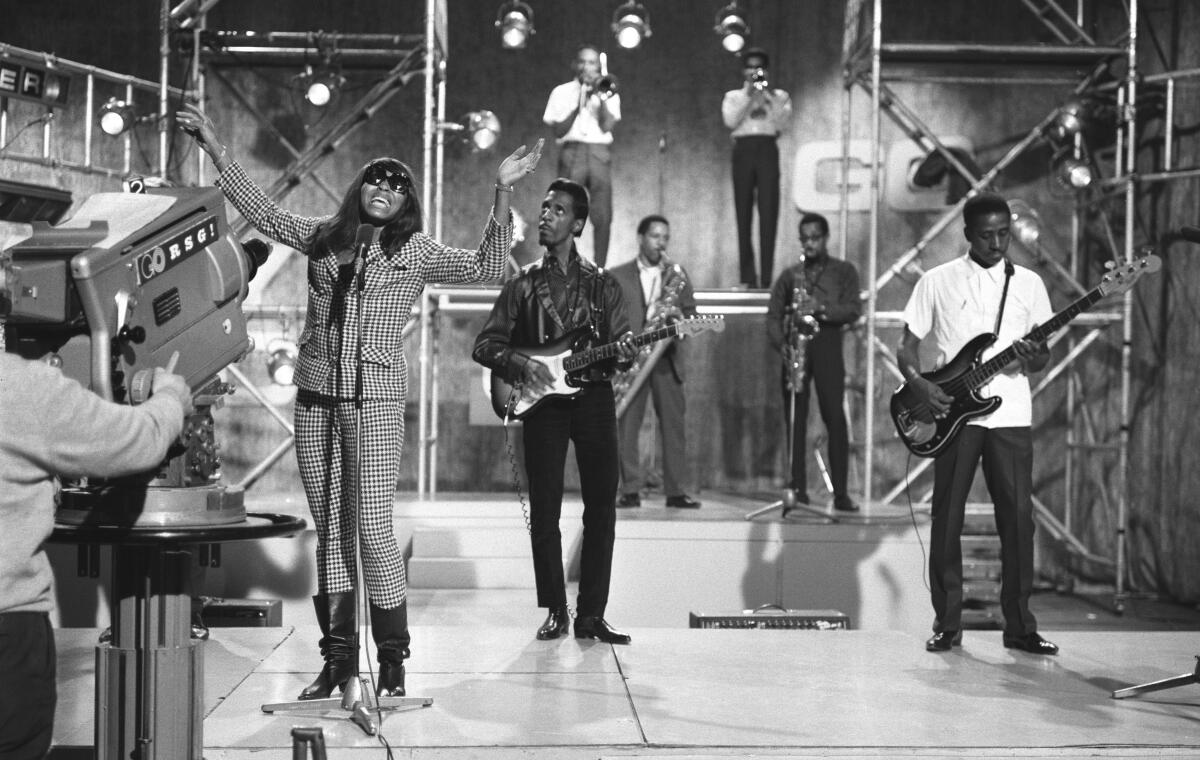
The beginning of her solo career was bumpy; she made records with unclear ideas about where she wanted to fit into the world. But to see Tina Turner in person was still to be wowed by her live-wire intensity. Watch Rod Stewart, another of her admirers, bring her out by surprise to do “Hot Legs” on “Saturday Night Live” in 1981. He’s wearing a shiny pink suit, yet she’s the one you can’t keep your eyes off.
Teamed with a new manager, Roger Davies, Turner found her lane at age 45 with 1984’s “Private Dancer,” which set her gritty vocals against gleaming electro-pop arrangements. That’s not to say the songs were fluff: In the title track, written by Mark Knopfler of Dire Straits, a sex worker describes the numbing monotony of her job; “What’s Love Got to Do with It,” a Grammy winner for both record and song of the year, wonders, “Who needs a heart when a heart can be broken?”
Yet the fortitude in Turner’s singing — the sense that here was a woman who’d chosen to look at hard things because she knew she was capable of it — made a commercial smash of the album, which sold 5 million copies in the U.S. alone and established Turner’s lion’s-mane hairdo as one of the iconic looks of the 1980s.
If you haven’t seen it in a while, revisit the music video for “What’s Love Got to Do With It”; the extreme close-ups feel almost radical in how unflinching they are, as though she’s daring us to hold her gaze.

That comfort onscreen led to a star acting turn in 1985’s “Mad Max Beyond Thunderdome,” and the hit records continued for the rest of the ’80s. “I’m just using my female attraction on a typical male,” she sang, hilariously, over a thwacking Phil Collins drum beat in “Typical Male”; “The Best” followed a few years later, its inspirational message already destined for countless sports-highlight reels (though, as usual, Turner cut the song’s optimism with a cold splash of reality: “Tear us apart / Baby, I would rather be dead”).
She spent the final decades of her career as a top-grossing live act, thrilling audiences with the routines she’d long since perfected and scooping up lifetime-achievement awards including a Kennedy Center Honor and an induction into the Rock & Roll Hall of Fame. Her dramatic life story became fodder for, among other things, a biopic starring Angela Bassett, a Broadway stage musical and an HBO documentary for which she was interviewed in Switzerland, where she moved in 1995.
Here are 10 of Tina Turner’s unheard treasures. The music legend died Tuesday at 83.
Who might we say has carried on Turner’s musical legacy? Certainly Beyoncé, who’s further explored the indelible ties between singing and dancing and who posted a note to Turner on her website in which she said she was “so grateful for your inspiration and all the ways you have paved the way.” Among the other celebrity testimonials that surfaced Wednesday was one from former President Obama, who said Turner was “unapologetically herself — speaking and singing her truth through joy and pain; triumph and tragedy.”
You could hear that commitment to the truth in the work of Amy Winehouse; you could hear the conversation between rock and soul in Janet Jackson’s music from the late ’80s. But it’s easy to wonder whether Turner’s precise type of pop stardom may have died with her. These days rawness and finesse seem to exist at opposite ends of a spectrum. Turner embodied both for her entire life.
More to Read
The biggest entertainment stories
Get our big stories about Hollywood, film, television, music, arts, culture and more right in your inbox as soon as they publish.
You may occasionally receive promotional content from the Los Angeles Times.
